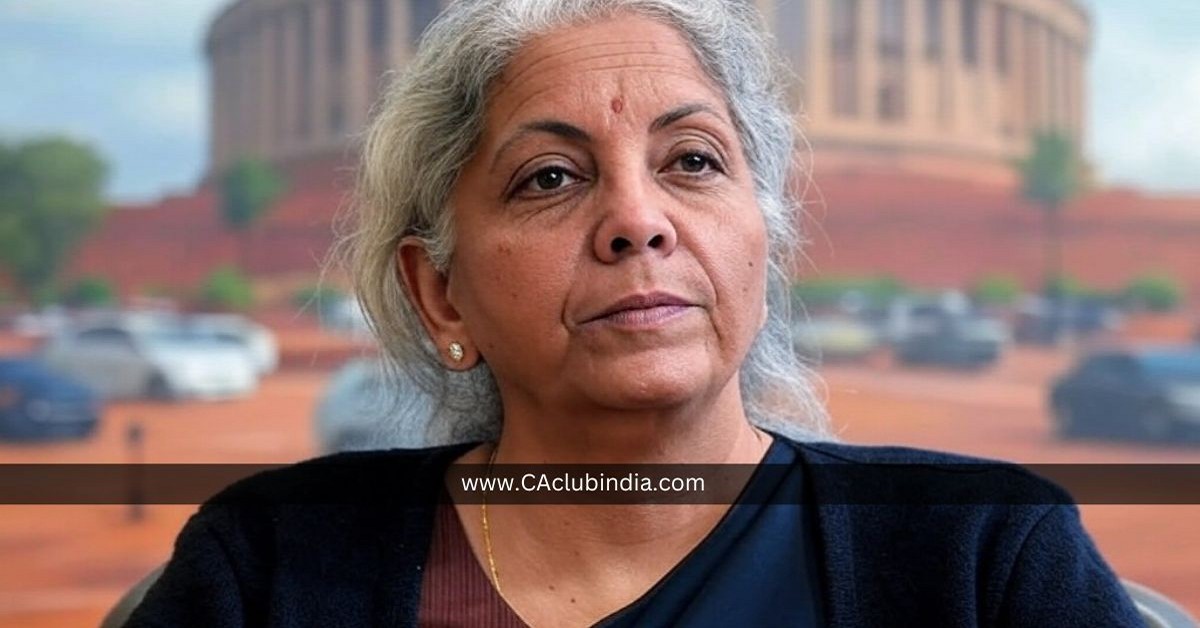In the upcoming Budget for FY26, Finance Minister Nirmala Sitharaman is expected to announce a roadmap for the gradual phasing out of the old personal income tax regime over the next few years. The move aims to align with the government's broader goal of simplifying tax structures and making the new tax regime, introduced in FY21, the default choice for taxpayers.
As of now, more than 72% of taxpayers have already embraced the new regime, which offers lower tax rates but with limited exemptions or deductions. This shift reflects the growing preference for a simpler, more streamlined system.

Old Tax Regime to Remain for Some Taxpayers
Sources close to the developments have indicated that the government will not introduce significant changes to the old regime, which allows for various investment-linked exemptions and deductions. Experts note that the old regime continues to be relevant for certain taxpayers, particularly those who benefit from exemptions such as house rent allowance, Section 80C deductions, home loan interest, health insurance premiums and NPS contributions. The Central Board of Direct Taxes (CBDT) revealed that 28% of taxpayers opted for the old regime in the assessment year 2024-25.
Simplified New Tax Regime with Key Changes
To further promote the new tax regime, the government is considering adjustments to the existing tax slabs. The first slab could be raised from Rs 3 lakh to Rs 4 lakh, and other slabs would be recalibrated accordingly. Additionally, the basic exemption limit may be increased from Rs 3 lakh to Rs 4 lakh, benefiting taxpayers earning up to Rs 15 lakh per year.
Experts believe that these changes will further incentivize taxpayers to adopt the new tax regime. The reduction in tax rates, particularly for lower- and middle-income groups, along with the simplified structure, is likely to push more taxpayers toward the new regime.
Tax Rates and Exemptions in Both Regimes
Under the new tax regime, income up to Rs 3 lakh is tax-free. For income between Rs 3 lakh to Rs 6 lakh, the tax rate is 5%, followed by 10% for Rs 6 lakh to Rs 9 lakh, 15% for Rs 9 lakh to Rs 12 lakh, and 20% for Rs 12 lakh to Rs 15 lakh. Income above Rs 15 lakh is taxed at 30%. Furthermore, taxpayers opting for the new regime can avail of a standard deduction of Rs 75,000, bringing the income threshold for tax exemption up to Rs 7.75 lakh.
Flexibility and Compliance Benefits of the New Regime
One of the main advantages of the new tax regime is its flexibility. Taxpayers are no longer required to make specific investments to claim deductions, reducing the compliance burden and providing greater financial management flexibility. In contrast, the old tax regime, while offering higher deductions, requires careful tax planning and adherence to investment guidelines, which can be cumbersome for some individuals.
Impact on Taxpayers and Future Outlook
As the government continues to tweak the new tax regime to make it more appealing, the upcoming Budget for FY26 could mark a significant step in the transition toward a more simplified, exemption-less tax system. With continued efforts to balance simplicity and fairness, the government aims to ensure that the new regime becomes the naturally preferred choice for all taxpayers in the years to come.
The proposed changes to the tax slabs and exemptions are expected to offer much-needed relief to middle-class taxpayers while gradually pushing more people to adopt the new tax regime, solidifying the government's long-term tax reform vision.






 CAclubindia
CAclubindia
